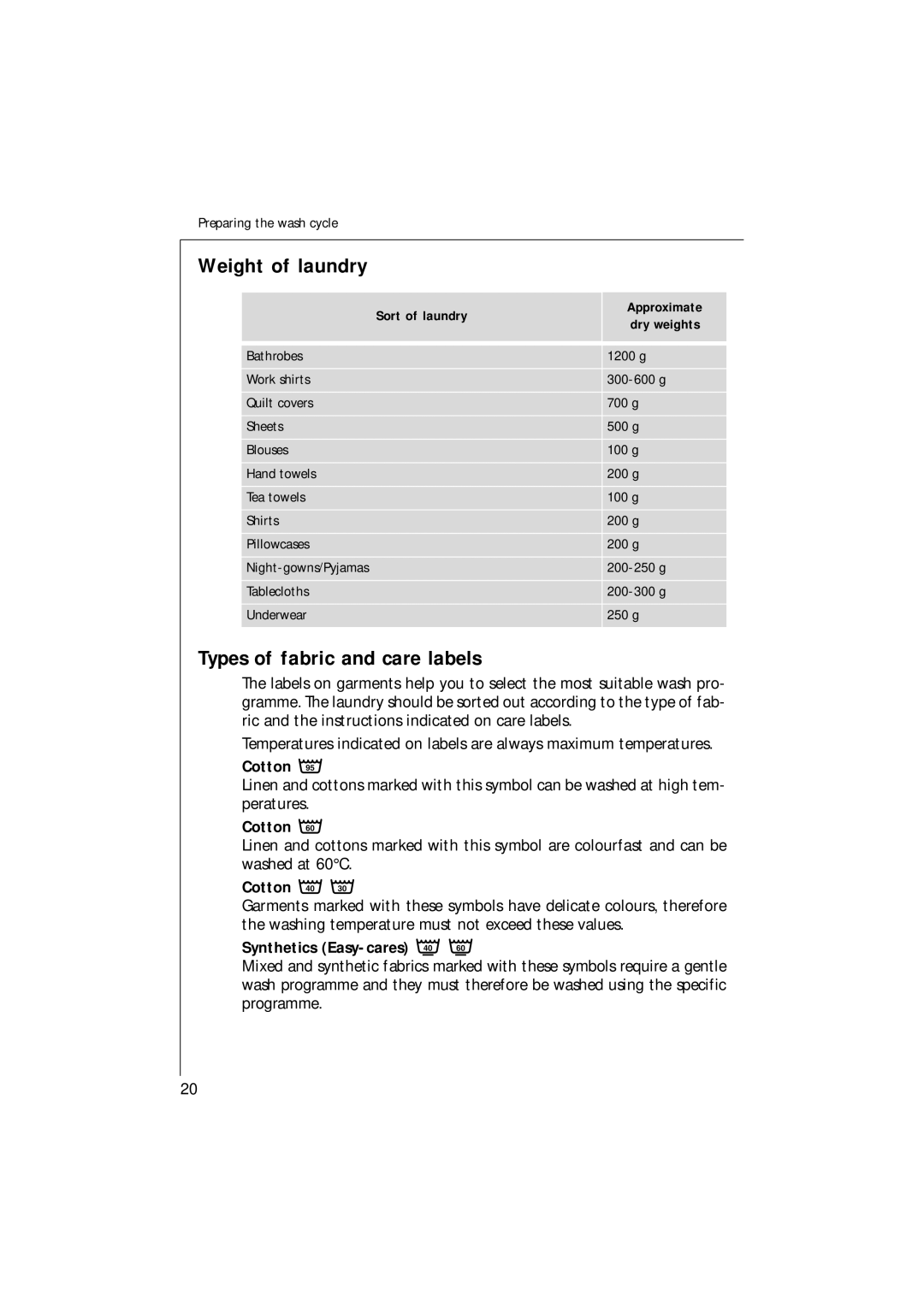
Preparing the wash cycle
Weight of laundry
| Sort of laundry | Approximate |
| dry weights | |
|
| |
|
|
|
|
|
|
Bathrobes |
| 1200 g |
|
|
|
Work shirts |
| |
|
|
|
Quilt covers |
| 700 g |
|
|
|
Sheets |
| 500 g |
|
|
|
Blouses |
| 100 g |
|
|
|
Hand towels |
| 200 g |
|
|
|
Tea towels |
| 100 g |
|
|
|
Shirts |
| 200 g |
|
|
|
Pillowcases |
| 200 g |
|
|
|
| ||
|
|
|
Tablecloths |
| |
|
|
|
Underwear |
| 250 g |
|
|
|
Types of fabric and care labels
The labels on garments help you to select the most suitable wash pro- gramme. The laundry should be sorted out according to the type of fab- ric and the instructions indicated on care labels.
Temperatures indicated on labels are always maximum temperatures.
Cotton 95
Linen and cottons marked with this symbol can be washed at high tem- peratures.
Cotton 60
Linen and cottons marked with this symbol are colourfast and can be washed at 60°C.
Cotton ![]()
![]()
Garments marked with these symbols have delicate colours, therefore the washing temperature must not exceed these values.
Synthetics (Easy-cares) 
Mixed and synthetic fabrics marked with these symbols require a gentle wash programme and they must therefore be washed using the specific programme.
20
